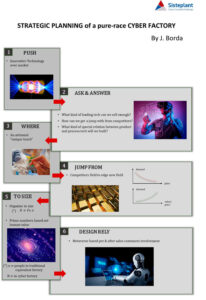
STRATEGIC PLANNING of a pure-race CYBER FACTORY
10 Competitive Technology Orbitals in a Cyber Factory
SHARE ON
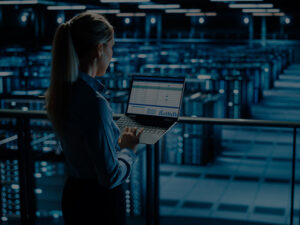 Officially introduced by the European Union in 2021, Industry 5.0 takes a holistic approach that integrates certain core values. While Industry 4.0 predominantly focused on connectivity, automation, and data-driven intelligence, Industry 5.0 introduces a paradigm where technology converges with a renewed emphasis on human-centric values. This evolution underscores the importance of collaboration, sustainability, and the integration of human skills. In essence, Industry 5.0 seeks to strike a balance between technological innovation and human values. The collaborative interaction between humans and machines takes centre stage, fostering a work environment where technology complements and augments human capabilities. This transition reflects a broader understanding of the role of technology in enhancing overall well-being, sustainability, and the collaborative spirit within the industrial ecosystem.
Officially introduced by the European Union in 2021, Industry 5.0 takes a holistic approach that integrates certain core values. While Industry 4.0 predominantly focused on connectivity, automation, and data-driven intelligence, Industry 5.0 introduces a paradigm where technology converges with a renewed emphasis on human-centric values. This evolution underscores the importance of collaboration, sustainability, and the integration of human skills. In essence, Industry 5.0 seeks to strike a balance between technological innovation and human values. The collaborative interaction between humans and machines takes centre stage, fostering a work environment where technology complements and augments human capabilities. This transition reflects a broader understanding of the role of technology in enhancing overall well-being, sustainability, and the collaborative spirit within the industrial ecosystem.
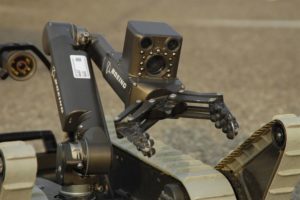 WALL-E, a 2008 animated masterpiece produced by Pixar, explores themes that resonate with contemporary challenges and as such, offers useful advice to today’s industry. It introduces a dystopian future where, as a result of global warming, Earth is overwhelmed by waste and pollution. The film is also a powerful commentary on the relationship between humans and technology. The characters of WALL-E and EVE, two robots with distinct personalities, serve as more than animated entities; they embody deeper meanings about technology and its impact on society.
WALL-E, a 2008 animated masterpiece produced by Pixar, explores themes that resonate with contemporary challenges and as such, offers useful advice to today’s industry. It introduces a dystopian future where, as a result of global warming, Earth is overwhelmed by waste and pollution. The film is also a powerful commentary on the relationship between humans and technology. The characters of WALL-E and EVE, two robots with distinct personalities, serve as more than animated entities; they embody deeper meanings about technology and its impact on society.
WALL-E, the last functioning waste-collecting robot, represents resilience and the potential for renewal. His daily routine of compacting garbage echoes the cyclical nature of environmental management, showcasing the need for sustainable practices. EVE, an advanced robot sent to Earth from the spaceship Axiom, symbolizes hope and the possibility of positive change. Her directive to find signs of life aligns with the film’s underlying message of environmental stewardship. The connection between WALL-E and EVE transcends robotic programming, emphasizing the importance of genuine human connections even in a technologically dominated world.
WALL-E’s dystopia is no longer an imagined and unlikely possibility.
WALL-E’s dystopia is no longer an imagined and unlikely possibility. Climate change is a reality, and fears about an uncertain future have been exacerbated by the global pandemic. Technology is inexorably advancing, but at the same time, a fear of technology associated with the concept of the “dark factory” is emerging. In this scenario, complete automation will eliminate humans, and production and maintenance operators will disappear, causing many to fear that technology has not been managed properly. Industry finds itself at a crossroads – the previous focus was solely on performance and profit, neglecting aspects such as sustainability, humanity, and climate change, all of which are crucial today. It must find a new direction.
This is where the call for Industry 5.0 emerged, driven by the European Commission and embraced by most EU members. Industry 5.0 redefines the industrial perspective, imposing limits on Industry 4.0 by emphasizing three fundamental aspects. First, industry must coexist with humans, recognizing the importance of the human factor in the industrial equation. Second, industry must be sustainable, considering environmental aspects and energy conservation. Third, industry must be resilient, considering the fragility revealed by events such as the COVID-19 pandemic.
In Industry 5.0, AI will coexist with humans in a human-centred manner.
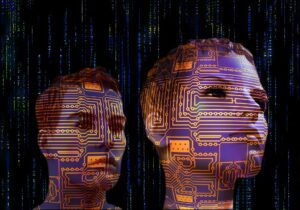 Robots will play a significant role as we move from Maintenance 4.0 to Maintenance 5.0. The COVID-19 pandemic revealed human fragility. We need versatile robots capable of performing maintenance tasks in tough situations. However, Industry 5.0 emphasizes technology should not overpower humans; humans must always remain at the centre of the equation.
Robots will play a significant role as we move from Maintenance 4.0 to Maintenance 5.0. The COVID-19 pandemic revealed human fragility. We need versatile robots capable of performing maintenance tasks in tough situations. However, Industry 5.0 emphasizes technology should not overpower humans; humans must always remain at the centre of the equation.
In this context, various types of robots are envisioned for maintenance tasks, including cobots (collaborative robots) that perform tasks similar to humans, working collaboratively with them. The idea is that robots should facilitate and collaborate with humans, ensuring humans are integral to the decision-making process, especially in extreme situations, but should never replace and eliminate them.
This collaboration will transform the way we perform maintenance, as robots and humans together will sum up to skills never seen before. Future machines will be designed for maintenance in a different way, with mixes of humans and cobots working together seamlessly. This will include exoskeletons that enhance human capabilities physically and mentally, remote operations using virtual and augmented reality, and robots operating similarly to humans.
The message is clear in the famous movie Robocop where the evolution of law enforcement technology witnesses a pivotal moment with the introduction of ED-209 (Robocop predecessor), designed to be the friendly face of neighbourhood policing. During its first demonstration, a disastrous malfunction leads to chaos and gives the green light to the RoboCop programme. The incident marks a turning point, highlighting the limitations of full robotic law enforcement. In the movie, the transition from fully autonomous robots, ED-209, to a mix of humanoid robots becomes imperative.
Equipped with three automatic cannons, an auto-shotgun, and a rocket launcher, ED-209 showcases the potential of robotic assistance but also highlights weaknesses in logic circuits and adaptability to complex environments. A critical vulnerability emerges, as skilled hackers, exemplified by Nikko Halloran, have the ability to override and control ED-209 through strategic port bypassing. This indicates the need for a new approach to law enforcement technology, one that embraces a mix of humanoid robots and advanced technology.
The journey from ED-209’s malfunction to its manual override weakness emphasizes the importance of integrating human-like adaptability with robotic precision, both in the film’s law enforcement scenario and in today’s industrial landscape. This vision for the future involves a collaborative approach, where humanoid robots coexist with humans, combining the strengths of both to create a more resilient and adaptable system. The shift represents a strategic move towards a balanced and effective future, where the capabilities of machines and the unique problem-solving abilities of humans complement each other seamlessly.
The Star Wars prequels also offer useful insights into the evolution of industrial technology. George Lucas’ thematic exploration of nature versus technology, symbolized in the visual contrast between clones and droids, extends beyond the cinematic narrative to a discourse on the benefits of augmented humans in the industrial landscape. For example, the dehumanizing representation of Trade Federation battle droids underscores the potential pitfalls of complete automation in industrial processes, while the subsequent integration of clones as workers introduces a nuanced interplay of technological prowess and ethical considerations.
From a technical standpoint, the Republic’s preference for clones over droids reveals a tension between expediency and ethical considerations. The Clone Army, equipped and logistically supported, provides a rapid and task-ready solution without the need for the establishment of fully automated systems. This reflects contemporary discussions in industrial circles on the efficiency and ethical implications of deploying advanced technologies in manufacturing and production. The unforeseen consequences of the Republic’s reliance on clones, similar to the unintended ramifications of advanced technologies in industry, come to light, as the clones showcase autonomy, creativity, and adaptability in their roles. This narrative prompts a technical exploration of the delicate balance required in harnessing the power of augmented humans for industrial applications.
In the cosmic allegory of Star Wars, the Republic’s preference for clones becomes a technical narrative emphasizing the advantages of augmented humans over fully automated systems in the industrial field. The parallels between the technical capabilities of augmented beings, showcased by the clones, and the ethical considerations inherent in their deployment, serve as a technical roadmap for our own journey through the evolving landscape of industrial technology. In augmented decision-making in the real world envisioned by Industry 5.0, human maintenance crews will be supported by AI, thus reshaping the landscape of equipment management, troubleshooting, and repair processes. This symbiotic relationship between human expertise and AI-driven insights represents a paradigm shift, offering a multitude of advantages over traditional approaches and stand-alone AI systems.
In a manufacturing environment, for instance, maintenance crews equipped with augmented decision-making capabilities will integrate AI into their workflow. When faced with equipment malfunctions, the crews will utilize AI algorithms to rapidly analyse historical performance data, identify potential failure patterns, and predict impending issues. This will expedite the diagnostic phase and allow proactive maintenance interventions, minimizing downtime and optimizing overall equipment effectiveness.
The adaptability inherent in augmented decision-making will be particularly beneficial in dynamic industrial settings. Human maintenance professionals, leveraging their experience and contextual understanding, will collaborate with AI to address intricate challenges. Unlike rigid AI systems that may struggle with nuanced scenarios, the combination of human intuition and AI analytics will result in nuanced and contextually aware decision-making. For instance, when determining whether to repair or replace a component, crews can factor in long-term implications, cost-effectiveness, and real-time operational demands.
In essence, augmented decision-making will transform maintenance crews into highly efficient and adaptive teams. They will be empowered by AI-driven insights that streamline processes, enhance diagnostic accuracy, and foster a proactive approach to equipment upkeep.
As we usher in an era of technological synergy, maintenance stands to benefit significantly from the augmented capabilities that blend human expertise with the analytical
The integration of humans, robots, and AI will transcend the limitations of traditional maintenance.
prowess of AI. This collaborative evolution will pave the way for a future where maintenance operations are not only more efficient and reliable but also more attuned to the intricate demands of industrial ecosystems.
 In the envisioned future of cohabitation between humans, robots, and AI, the integration of digital twins, metaverse, and augmented reality will be a transformative force in remote asset maintenance. Maintainers, regardless of their geographical location, will be able to immerse themselves in assets using augmented reality, thereby revolutionizing the approach to troubleshooting by combining robotics with human advisory roles.
In the envisioned future of cohabitation between humans, robots, and AI, the integration of digital twins, metaverse, and augmented reality will be a transformative force in remote asset maintenance. Maintainers, regardless of their geographical location, will be able to immerse themselves in assets using augmented reality, thereby revolutionizing the approach to troubleshooting by combining robotics with human advisory roles.
In the movie Surrogates, starring Bruce Willis, individuals navigate the physical world through robotic avatars. The augmented reality and digital twin scenario of Industry 5.0 unfolds as a real-world manifestation of this imagined synergy. In this scenario, maintainers will gain the ability to virtually step into assets, diagnose issues, and guide robotic interventions, all accomplished from a considerable distance. The collaborative synergy among humans, robots, and AI in this immersive maintenance paradigm will not only amplify operational efficiency but also introduce a dimension of interconnected collaboration. The conventional boundaries between the physical and virtual realms will dissolve, ushering in an era of unmanned, collaborative, and seamlessly integrated maintenance operations, akin to the futuristic landscapes of the science fiction narratives mentioned here. In this envisioned future, maintenance operations link human expertise, robotic precision, and artificial intelligence insights. The once-distinct realms of physical and virtual will cease to be separate entities, converging into a unified landscape where human controllers, robots, and AI collaborate to ensure optimal functionality and efficiency.
The dissolution of conventional boundaries implies that maintenance professionals can transcend geographical limitations, immersing themselves in the assets they oversee through augmented reality interfaces. The interconnected collaboration will unfold as a dynamic interplay of strengths, where human intuition and adaptability will combine with the precision and automation capabilities of robots. The result will be an unmanned and collaborative maintenance approach that redefines industry standards.
The integration of humans, robots, and AI will transcend the limitations of traditional maintenance. In effect, human controllers will be the orchestrators of the maintenance process, leveraging their expertise to make nuanced decisions, whilst relying on their robotic counterparts for physical interventions. Meanwhile, AI will analyse data, provide real-time insights, and continuously learn from human interactions to enhance its decision-making prowess, thus becoming the conductor of the maintenance process, harmonizing the efforts of humans and robots and ensuring efficiency and reliability in asset management. Ultimately, as Industry 5.0 becomes a reality, maintenance operations will no longer be bound by physical proximity, assets across the globe will be managed with precision, and the synergy between human intelligence and technological prowess will create a new standard for collaborative efficiency.
Fuente: Articulo publicado en la revista “MaintWorld”: The Augmented Revolution: The Harmony of Humans, Robots, and AI in Maintenance 5.0 – R&D – Maintworld

10 Competitive Technology Orbitals in a Cyber Factory
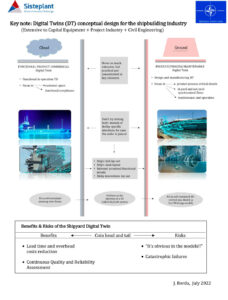
10 Competitive Technology Orbitals in a Cyber Factory
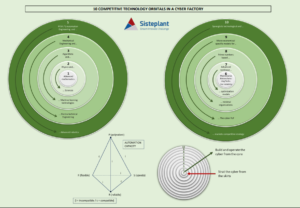
10 Competitive Technology Orbitals in a Cyber Factory

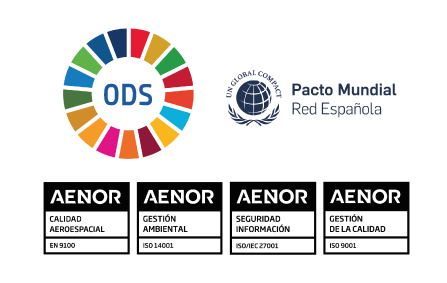


This website uses cookies so that we can provide you with the best user experience possible. Cookie information is stored in your browser and performs functions such as recognising you when you return to our website and helping our team to understand which sections of the website you find most interesting and useful.
Strictly Necessary Cookie should be enabled at all times so that we can save your preferences for cookie settings.
If you disable this cookie, we will not be able to save your preferences. This means that every time you visit this website you will need to enable or disable cookies again.
This website uses Google Analytics to collect anonymous information such as the number of visitors to the site, and the most popular pages.
Keeping this cookie enabled helps us to improve our website.
Please enable Strictly Necessary Cookies first so that we can save your preferences!
More information about our Cookie Policy